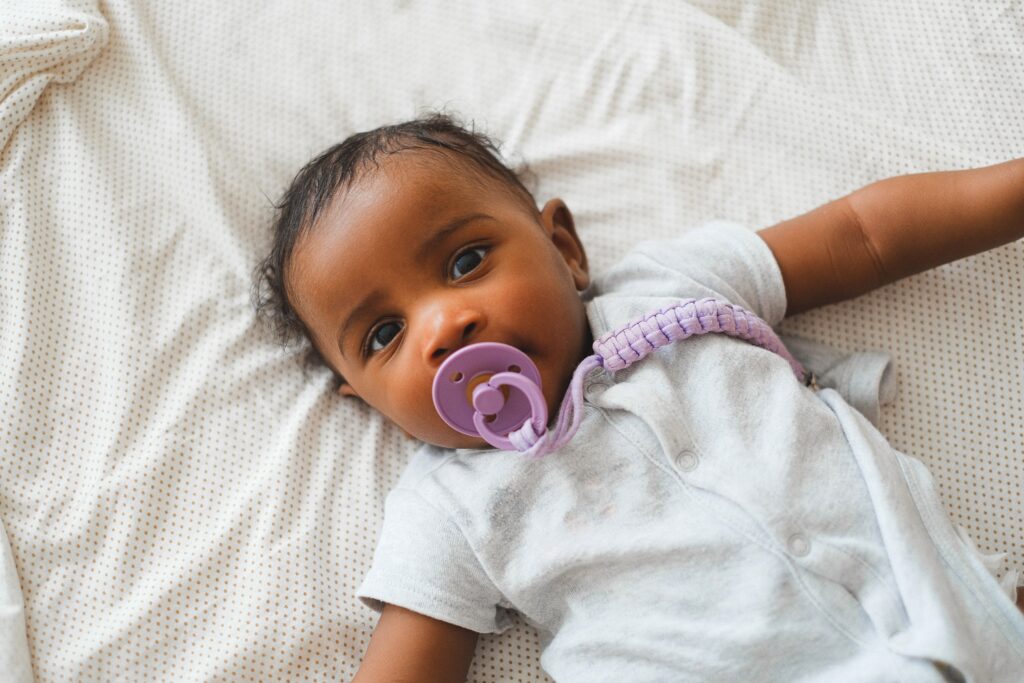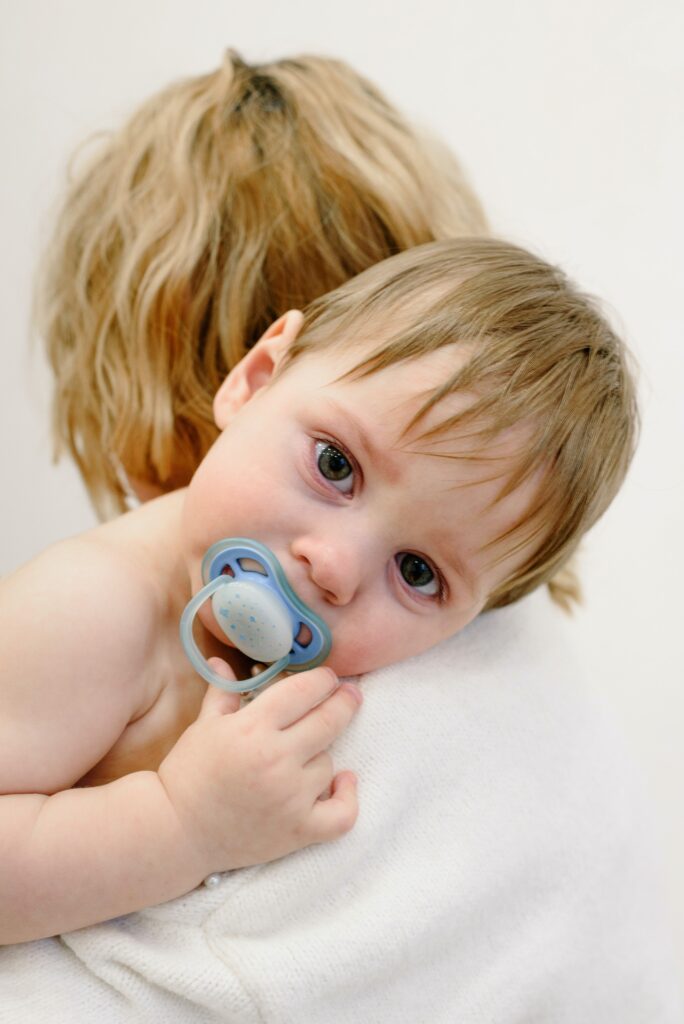As a parent, you naturally want what’s best for your child and their oral health. One issue that stirs confusion among parents is the topic of pacifier teeth and its effects on child’s dental health.
Often known as “pacifier teeth,” there are several opinions on this matter, leaving parents in limbo. This blog will clear uncertanities and list down the things you need to know about pacifier teeth.

What is Pacifier Teeth?
Pacifier teeth refer to a set of dental issues caused by extended use of pacifiers. These issues include misalignment of teeth, changes in the roof of the mouth, or problems with child’s bite. It’s important to note that these issues stem from long-term and excessive use of pacifiers, particularly past 2 years of age. Short-term and controlled use of pacifiers is generally considered harmless and can even have certain benefits. These include reducing the risk of sudden infant death syndrome (SIDS).
The term “pacifier teeth” is somewhat misleading, as it seems to imply a specific condition when in reality it refers to a range of dental issues. Not every child who uses a pacifier will encounter these problems. There are various factors at play including the duration and frequency of pacifier use, child’s general oral health care practices and genetic factors.

Is Pacifier Teeth a Myth or Reality?
To answer the question of whether pacifier teeth are a myth or a reality, lets have a look into following:
1. Scientific Evidence:
Several studies show that prolonged pacifier use can cause dental issues. It doesn’t mean that every child using a pacifier will have these problems, but the risk increases with prolonged use.
2. Dental Professionals’ Opinions:
Most dentists and orthodontists agree that extended pacifier use can lead to dental issues. They recommend limiting pacifier use once a child hits the age of two and eliminating it by the time the child turns four.
3. Individual Variances:
It’s important to remember that every child is different. Some children might use a pacifier extensively and still have straight teeth, while others might develop issues even with minimum usage.
Effects of Pacifier Teeth on Oral Health
Misaligned Teeth
One of the most common issues with pacifier teeth use is misaligned teeth. When a child uses a pacifier regularly for a long time, the constant pressure exerted by the pacifier can affect the alignment of the teeth and jaws.
Alteration in the Roof of the Mouth
Prolonged pacifier use can also lead to changes in the shape of the roof of the mouth. This could lead to issues with breathing, speech, and eating.
Problems with Bite
Pacifiers also lead to problems with a child’s bite. Child could develop an open bite, where the upper and lower front teeth don’t meet when the mouth is closed, or a crossbite, where the upper teeth fit into the wrong side of the lower teeth.
Tips for Avoiding Pacifier Teeth
Preventing pacifier teeth doesn’t necessarily require complete elimination of pacifiers from your child’s life. Pacifiers can be a source of comfort for many children, and abrupt removal can be stressful. Here are some tips on how to avoid pacifier teeth:
First, consider introducing the pacifier in the right age. It is safe to start giving pacifier to your baby starting one month of age. By this time, breastfeeding is well established, and the potential for nipple confusion is reduced.
Next, gradual weaning is effective and less stressful than going cold turkey. Start by limiting the times when your child can use the pacifier, like during naps or when they’re upset.
Finally, use the right kind of pacifier. Not all pacifiers are created equal. Look for orthodontically approved pacifiers that are designed to minimize the damage to your child’s teeth and jaws.

Treating Pacifier Teeth
Treating pacifier teeth depends on the specific issues your child is facing. Here are some potential solutions:
1. Orthodontic Treatment:
For misaligned teeth or bite problems, orthodontic treatment may be necessary. This could include braces or retainers.
2. Speech Therapy:
If your child has developed speech issues due to alterations in the roof of the mouth, speech therapy is recommended.
3. Promoting Proper Oral Hygiene:
Encourage regular brushing, flossing, and dental check-ups to maintain good oral health.
Conclusion
Pacifier teeth are not a myth but it’s not an absolute reality either. It’s a consequence of prolonged pacifier use. By being aware of the possible risks and taking steps to use pacifiers responsibly, your child’s teeth will grow normally. Remember, when in doubt, it’s always best to consult your pediatrician. They will guide you based on your child’s specific needs and circumstances.
It’s a journey, and as parents, our role is to guide our children through it, providing the support they need to grow into healthy and happy adults. And when it comes to pacifiers and your child’s oral health, a bit of knowledge can go a long way!
If you are enjoying our informative blogs, please like and share with your friends and family. Also be sure to checkout our products and contact us for samples.

